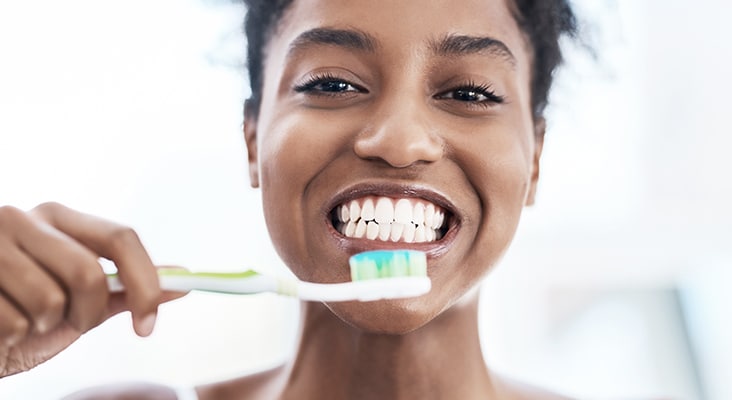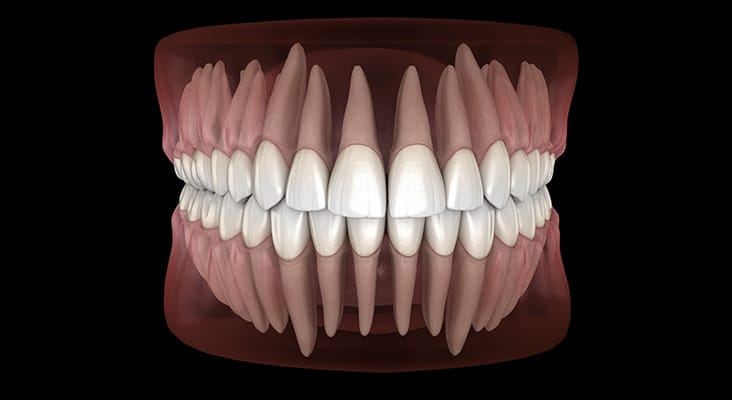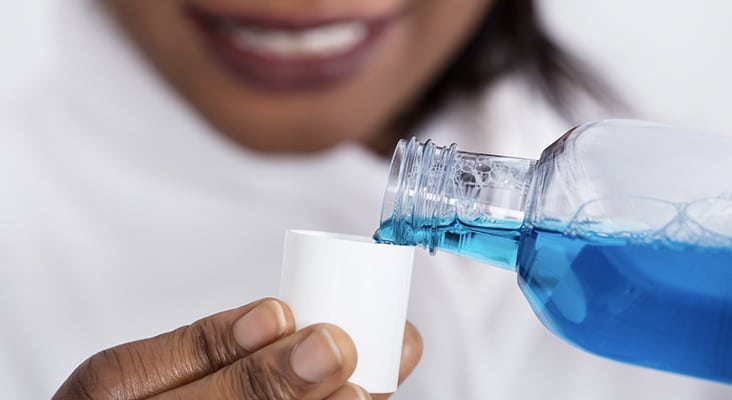The Etiology of Noncarious Cervical Lesions
Noncarious cervical lesions (NCCLs) are small saucer-shaped or notch-shaped losses of tooth structure at the cementoenamel junction that present most often on the facial surface of teeth.

Noncarious Cervical Lesions
Noncarious cervical lesions (NCCLs) are small saucer-shaped or notch-shaped losses of tooth structure at the cementoenamel junction that present most often on the facial surface of teeth. These lesions are not at increased risk of caries because they are generally accessible for self and professional cleaning. NCCLs generally present in middle-aged to older adults, with highly variable prevalence ranging from 5% to 90%.
Photo Credit: kali9 / E+

To Restore or Not to Restore
Evidence shows that the etiology of NCCLs is multifactorial. Abfraction due to occlusal stress, erosive tooth wear, or a combination of factors are all possible etiologies of NCCLs. While NCCLs don’t necessarily require restoration, patients typically seek treatment based on a desire for improved esthetics. The decision to restore and/or manage NCCLs depends on the theory assumed responsible for their origin.
Photo Credit: zoranm / E+

Theory of Origin
Originally, NCCLs were attributed solely to excessive abrasion caused by harsh toothbrushing and/or the use of abrasive dentifrices. On their own, toothbrushes do not produce mechanical damage during brushing; however, excessive brushing force and highly abrasive toothpastes can cause permanent wear of dentin. Generally, this problem is associated with poor oral hygiene methods, such as horizontal brushing technique along the cervical margins of teeth in line with the margins of gingival tissue. While brushing with too much force and using an abrasive toothpaste may seem logical causes of NCCLs, several factors shed doubt on these explanations. NCCLs often appear on a single tooth, which is difficult to produce with brushing motions. Additionally, NCCLs have been observed in a nonbrushing population of lepers who experienced acidic food exposures, parafunction, and some xerostomia. NCCLs have also been noted in some ancient teeth found in archeological digs from five different geographical sites. NCCLs are not generally sensitive, which seems counterintuitive if they were caused by continued abrasion of the dentin.
Photo Credit: Hiraman / E+

Alternative Theory
A second theory is that NCCLs are caused by the tensile stress created by occlusion. Although this theory was first described in 1984, it did not receive much attention until 1991, when Grippo coined the term “abfraction” to describe this phenomenon. Abfractions are presumed to arise in the presence of heavy working contacts and associated occlusal stresses. Teeth under stress involve compression on lingual surfaces and tension on buccal surfaces. Tension leads to micromorphological fatigue and contributes to loss of superficial tooth structure during mastication and/or brushing. Tooth stresses occur during normal occlusion, but are greater during malocclusion. This often results in occlusal wear facets.
Photo Credit: alex-mit / iStock / Getty Images Plus

Lesions Caused by Abraction
Treatment and management for lesions caused by abfraction require more care. If patients present with lesions on single teeth, obvious wear facets, and/or no hypersensitivity, abfraction may be the cause. In this case, modification of the existing occlusion should be considered prior to restoration of NCCLs. One option is to improve anterior guidance with crowns or veneers, thus eliminating or reducing lateral excursive contacts on posterior teeth. A thorough risk/benefit analysis must be performed before this treatment is initiated. The impact of using nightguards and bite splints to reduce the risk of NCCLs among those with malocclusion has not yet been reported in the literature. However, these treatments would not necessarily affect normal daytime occlusal patterns or stresses.
Photo Credit: laflor / E+

Lesions Caused by Erosion
If the clinical signs point toward erosion as the primary etiology, then the nature of erosion—intrinsic vs extrinsic—will determine the treatment. In the case of lesions on facial surfaces due to extrinsic erosion, a diet analysis is necessary. The key is to provide the patient with an effective protocol to avoid acidic challenges or minimize erosive tooth wear after an acidic challenge. Such an approach may include rinsing with water, followed by rinsing with sodium bicarbonate and an over-the-counter fluoride mouthrinse. Eating cheese after an acidic challenge is useful because this stimulates salivary flow rates and buffering capacity, and the relatively high pH of cheese (6 to 7.4) helps neutralize acidity. Thorough care must be taken to implement successful preventive strategies so that extensive, expensive restorative care can be avoided.
Photo Credit: AndreyPopov / iStock / Getty Images Plus

Restorative Options
If the lesions are esthetically displeasing, become detrimental to pulp health, or if the patient experiences dentinal hypersensitivity, then NCCLs should be restored. The goal is to relieve or eliminate the events contributing to NCCL formation so the lesions do not return after restoration. Evidence suggests a material with a low elastic modulus that will accommodate the tooth flexure—such as microfilled, nanohybrid, or nanofilled composite resin, glass ionomer, or resin modified glass ionomer—may be desirable for restoring NCCLs. The restoration of NCCLs may involve a regular composite, a low modulus composite, a flowable composite, or a flowable composite liner. Low modulus materials or liners are intended to accommodate tooth flexure; however, the evidence does not show the use of these materials to be necessary. Generally, the enamel margins of the lesion are roughened with a flame-shaped diamond to ensure a bevel exists. Staining or leakage along the composite border may become difficult to remove during hygiene procedures. Placing mechanical retention in preparation to restore NCCLs and not relying on adhesives alone should be considered. If the tooth is being crowned, a porcelain-fused-to-metal crown or all-ceramic crown could be extended to include the boundaries of the lesion. If there are occlusal stresses contributing to an abfraction and they persist, the lesions will become refocused at the border of the crown and begin to produce a more apical NCCL. The tooth can be removed from occlusion at the obvious contacts to reduce stress. The occlusion could be shifted from group function to canine guidance. However, most of these effects are temporary.

